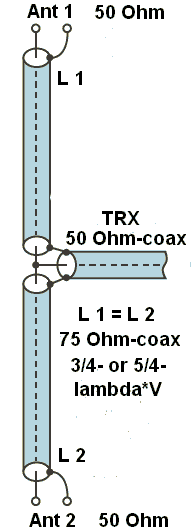I have used RG-58 in lengths at and below 50 feet and up to 512MHz, as well as LMR-400 (and equivalent) up to 100 feet and 956 MHz, for both commercial and amateur use for thirty years and have experienced very little in the way of line loss and impact from SWR. This has been for fixed station, portable and fixed repeaters, mobile installations in vehicles, vessels, and a few aircraft. There will always be some "engineer" type (I have also worked as a radio engineer as well) that will bring out the math, line loss, velocity factor, ground plane square inches, etc ad infinitum saying that this will not work. Real world, use the appropriate connectors on each end (no adapters), the shortest most direct cable run without bending coax beyond its bend radius or daisy chaining coax pieces, and coax able to handle the power output, and you can achieve excellent results without the science aspect impacting that much. You could easily use LMR-400 for your 2 meter, 70 cm, CB (assuming 27-29 MHz), and 800-900 Mhz solution, keeping below 100 foot in cable length and be fine. I would still use the correct connectors, one single coax run for each antenna, and check SWR with a meter, but I do exactly that at my own home and have no problems. There is no need to over complicate the scenario, and my own radio system is not "public safety grade" funded by grants and tax payer budget, with padded hardware as a result.



